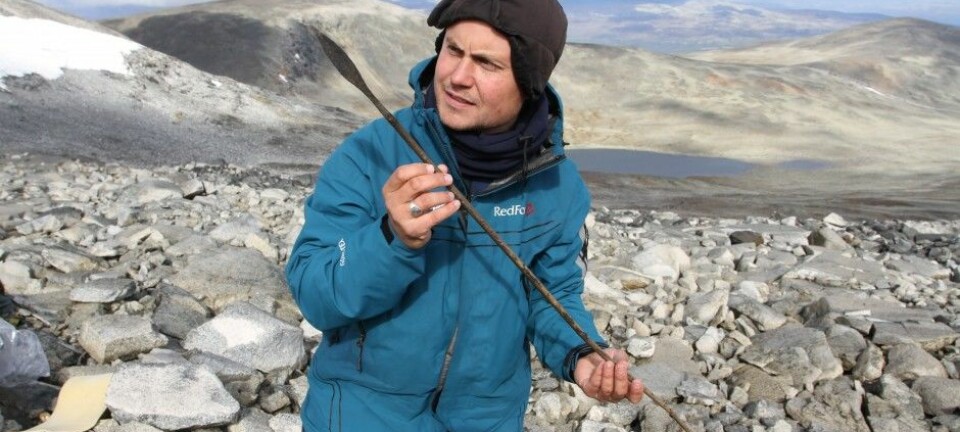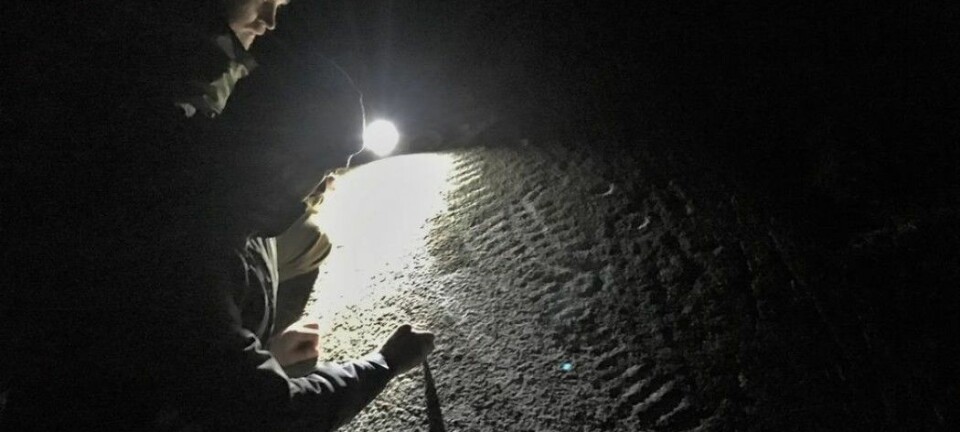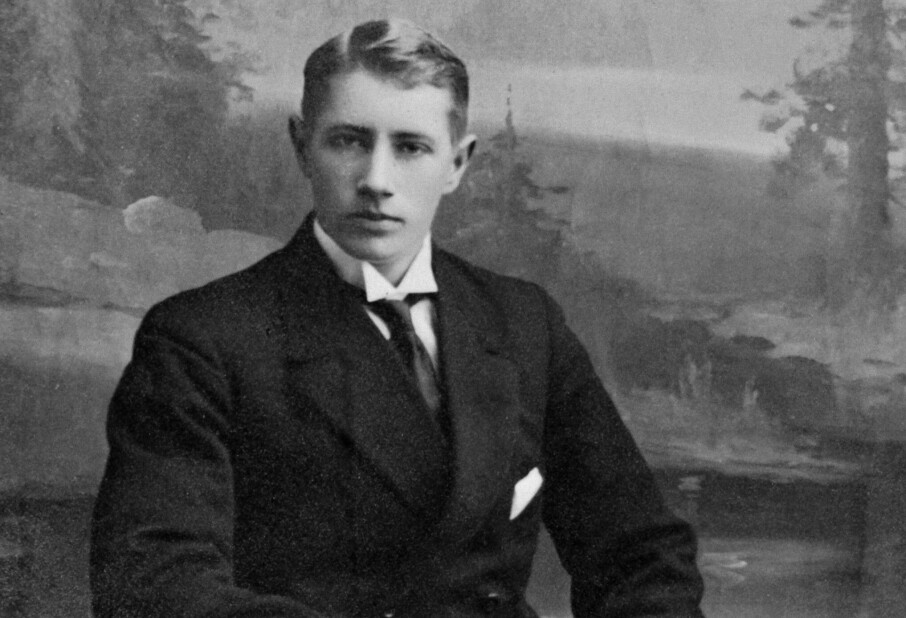
Glacial archaeology: Activity over this mountain pass was at its peak during the Viking Age
Norwegians used this mountain pass for more than 1200 years. As the ice melts in the high mountains, long-hidden objects emerge.
The archaeologists walk in a line next to each other. They use their trained eye to look for remnants of people who spent time on this patch of ice and snow many hundreds of years ago.
In the summer of 2016, forskning.no paid a visit to the site to join the archaeologists in the search for objects emerging from the melting ice.
And indeed a lot has come to light from these snowy patches of several thousand year old ice in Norway’s Jotunheimen mountains. One of these places is Lendbreen, located high in the mountains – not far from Lom municipality.
In total, the archaeologists have discovered approximately 800 artefacts left behind by people who were there centuries ago. Arrows, clothes, leather shoes and other artefacts are among the objects that ended up in the ice over such a long period.
Due to climate change, the old ice is melting, revealing objects that have been encapsulated in the ice for a long, long time. Many of the artefacts – including a knife, and a mitten dated to the Viking Age – are very well preserved.
Archaeologists Lars Pilø and Espen Finstad from Innlandet county municipality and archaeologist James Barrett from the University of Cambridge have jointly had a new research article describing the Lendbreen findings published in the journal Antiquity.
A mountain pass
The article describes how the route over Lendbreen was part of several mountain passes, which people started to use around 300 CE.
Many objects are dated using the Carbon-14 method. Most of the artefacts originate from the period between 300 AD and 1500 AD.
Some of the Lendbreen objects are much older than this, including a ski dating back to sometime between 791 and 540 BCE. This means that the area has been in use for a very long time.
Activity over the mountain pass was at its peak during the Viking Age, around the year 1000. The researchers believe this is probably due to the changing society at the time, when parts of Norway became more closely linked politically, and trade increased.
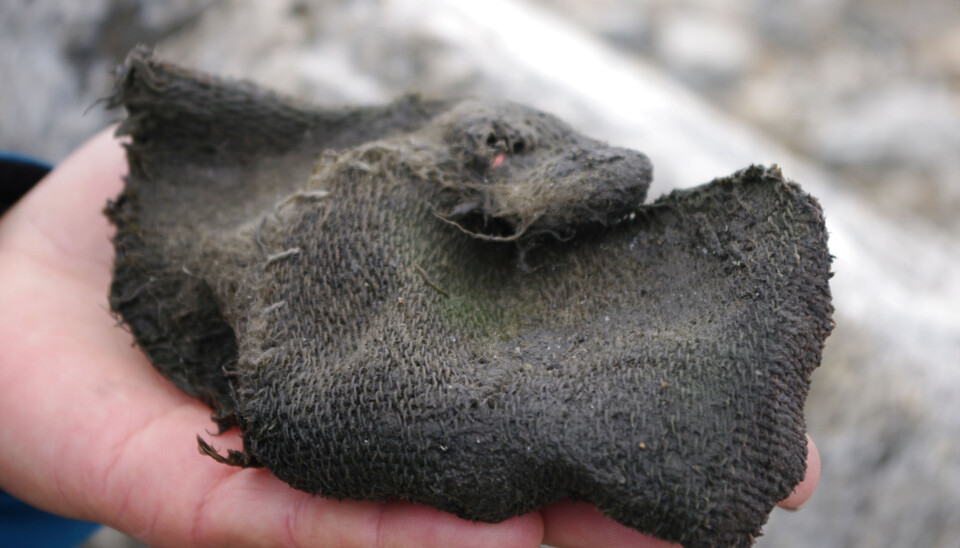

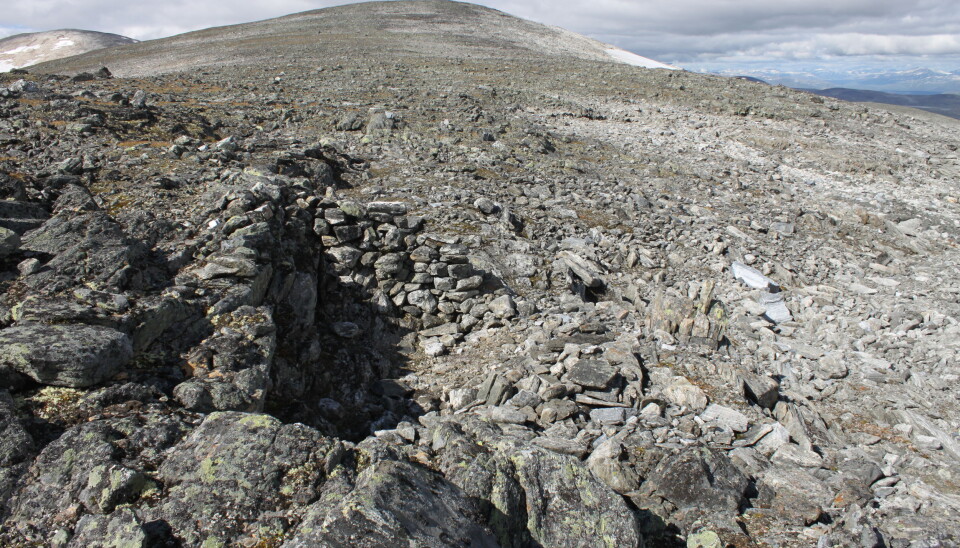
Route over the mountain
In addition to the objects that were lost or thrown away over the centuries, the researchers have found numerous cairns built of stone and the remains of a refuge. The cairns marked the route.
Archaeologists believe the route across Lendbreen was part of a network of routes that led to different parts of Norway. These trails across the mountain were used for transporting various goods over long distances.
Butter, hides, or reindeer antlers were Norwegian items for export during the Viking era, according to the Antiquity article.
On their own blog, the researchers describe the entire process of uncovering objects from Lendbreen. They began in 2011 and have had many seasons of fieldwork. The blog also showcases many discoveries made over the years.
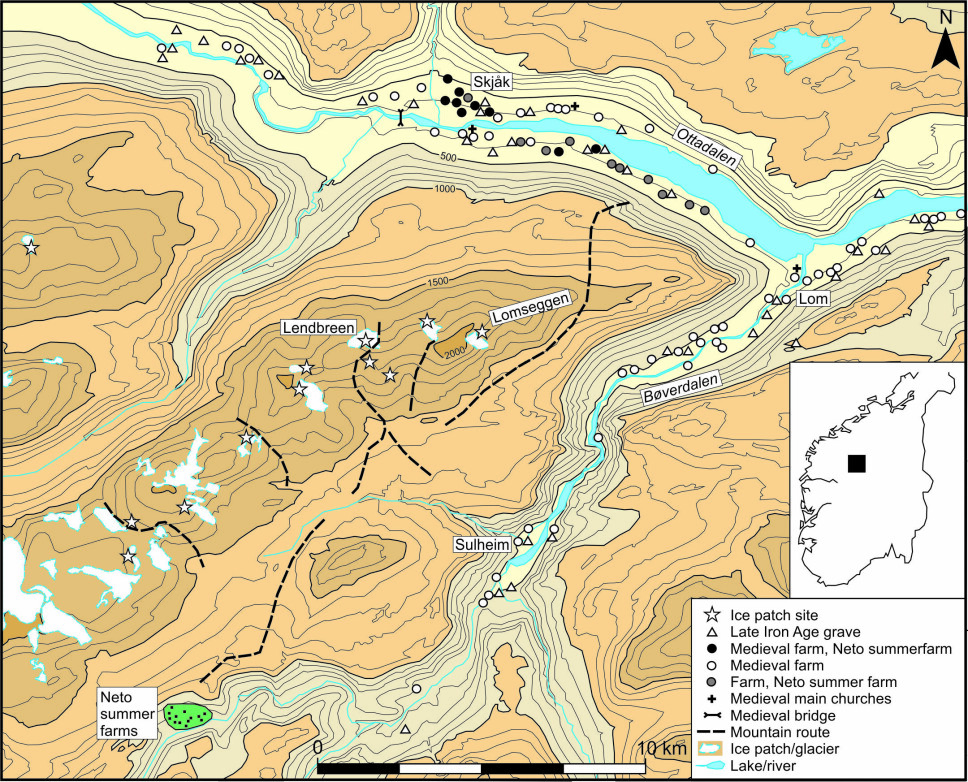
Translated by: Ingrid P. Nuse
Reference:
Barrett et al: Crossing the ice: an Iron Age to medieval mountain pass at Lendbreen, Norway. Antiquity 2020, DOI: 10.15184/aqy.2020.2. Summary.
———
Read the Norwegian version of this article on forskning.no








